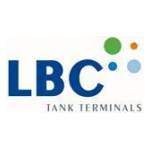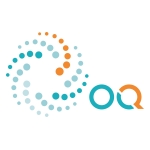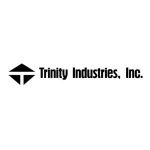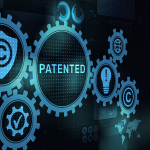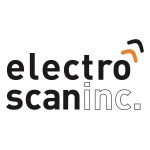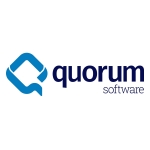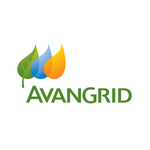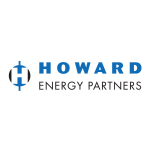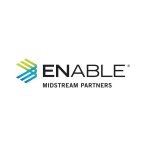FERGUS FALLS, Minn.--(BUSINESS WIRE)--Otter Tail Corporation (Nasdaq: OTTR) today announced financial results for the year ended December 31, 2020.
|
|
|
|
|
|
|
|
2020 SUMMARY
|
|
|
|
|
|
|
|
|
(in millions, except per share amounts)
|
4Q20
|
|
4Q19
|
|
2020
|
|
2019
|
Operating Revenues
|
$
|
226.8
|
|
|
$
|
215.7
|
|
|
$
|
890.1
|
|
|
$
|
919.5
|
|
Net Income
|
$
|
18.7
|
|
|
$
|
20.4
|
|
|
$
|
95.9
|
|
|
$
|
86.8
|
|
Diluted Earnings Per Share
|
$
|
0.45
|
|
|
$
|
0.51
|
|
|
$
|
2.34
|
|
|
$
|
2.17
|
|
2020 HIGHLIGHTS
-
Consolidated operating revenues decreased to $890.1 million in 2020 compared to $919.5 million in 2019 primarily due to the impact of COVID-19 on our Manufacturing segment.
-
Consolidated net income increased 10.4% to $95.9 million.
-
Diluted earnings per share increased 7.8% to $2.34 per share.
-
The corporation achieved a consolidated return on equity of 11.6% on an equity ratio of 50.7%.
-
The corporation’s board of directors increased the quarterly common stock dividend to $0.39 per share, an indicated annual dividend rate of $1.56 per share and a 5.4% increase from $1.48 per share in 2020. The next quarterly dividend is payable on March 10, 2021 to shareholders of record on February 12, 2021.
-
The corporation expects 2021 diluted earnings per share to be in a range of $2.39 to $2.54.
CEO OVERVIEW
“Otter Tail Corporation achieved outstanding financial results in 2020 despite the economic impacts from the global pandemic. These results are attributable to the collective efforts of employees across all of our operating companies,” said President and CEO Chuck MacFarlane. “Our Electric segment led the way with a $7.7 million increase in net income primarily driven by capital investments in energy generation and regional transmission projects. Our Plastics segment increased net income by $7.0 million driven by strong construction markets and favorable market conditions driven by supply constraints and rising prices. Manufacturing segment earnings were down $1.9 million primarily due to the impacts of COVID-19 on sales volumes. Our corporate costs increased $3.9 million mainly due to a $2.5 million committed contribution to the Otter Tail Corporation Foundation.
“Employees across the organization performed admirably during the year despite the challenges presented by COVID-19.
“Otter Tail Power Company executed on a record year in capital spending, driven by two significant projects that marked major milestones in our generation resources transition.
“Our Merricourt Wind Energy Center, a $260 million 150-megawatt (MW) wind generation facility began commercial operation in December. The facility generates enough energy to power more than 65,000 homes.
“We expect our Astoria Station, a $152.5 million 245-megawatt natural gas-fired combustion turbine generation facility, to be substantially complete in the first quarter of 2021. This facility complements our wind generation with more dispatchable capacity than our soon-to-be retired 140 MW Hoot Lake Plant—with projected carbon emissions 85% less than historic Hoot Lake Plant levels.
“Otter Tail Power Company announced in September the $60 million Hoot Lake Solar project. This is a 49.9‑megawatt (MW) solar farm we plan to build on and near Hoot Lake Plant property in Fergus Falls, Minnesota. The project will include up to 150,000 solar panels and generate enough energy to power approximately 10,000 homes each year. The location of Hoot Lake Solar offers us a unique opportunity to re-use our existing Hoot Lake transmission rights, substation and land after retiring Hoot Lake Coal Plant in 2021.
“Otter Tail Power Company continues to enhance its generation mix as it transitions to a cleaner energy future while maintaining low rates in the region for its customers. By 2023, up to 35 percent of our energy is projected to come from renewable resources.
“Otter Tail Power Company filed a rate request with the Minnesota Public Utilities Commission (MPUC) in November. Investment in cleaner energy generation and smarter technologies primarily are driving this request along with rising costs for providing electric service. In December the MPUC approved our request to begin recovering $6.9 million or a 3.2 percent increase on an interim basis in January 2021 as it considers our overall request to increase revenue $14.5 million or 6.77 percent. Even with this increase Otter Tail Power Company will continue to have some of the lowest rates in the country.
“Otter Tail Power Company continues to benefit from strong rate base growth investments. These investments represent over 85 percent of our total capital spending over the next five years and include regulated investments in renewable generation, technology and infrastructure, and transmission assets. We expect this to result in a projected compounded annual growth rate of approximately 5 percent in utility rate base from year-end 2020 through 2025 and to deliver value to customers and shareholders. We continue to make system investments to meet our customers’ expectations, reduce operating and maintenance costs, reduce emissions and improve reliability and safety.
“Our Plastics segment had a record year, maintained production in a time when some competitors did not and continued to see strong market demand as new home and other construction continued through the pandemic.
“BTD Manufacturing was significantly impacted by the COVID-19 pandemic primarily in the second quarter as many of their customers had temporary plant shutdowns. BTD did an excellent job of managing staffing and inventory during the year to help mitigate the negative impact on sales. The recreational vehicle and lawn and garden end markets did experience a rapid recovery during the third and fourth quarters last year as they began to rebuild depleted inventories.
“Our long-term focus remains on executing our growth strategies, which are expected to increase shareholder value. For the utility, our strategy is to continue to invest in rate base growth opportunities and drive cost efficiency within our operating and maintenance expenses, which will lower our overall risk, create a more predictable earnings stream, maintain our credit quality and preserve our ability to pay dividends. Over time, we expect the electric utility business will provide approximately 75 percent of our overall earnings.
“The utility is complemented by well-run, strategic manufacturing and plastic pipe businesses, which provide organic growth opportunities from new products and services, market expansion and increased efficiencies. We expect these companies will provide approximately 25 percent of our earnings over the long term.
“Our strategic initiatives to grow our business and achieve operational, commercial and talent excellence continue to strengthen our position in the markets we serve. We remain confident in our ability to grow earnings per share in the range of 5 to 7 percent compounded annually from a base of $2.34 in 2020. And we are announcing our 2021 earnings per share guidance to be in the range of $2.39 to $2.54.”
CASH FLOWS AND LIQUIDITY
Our consolidated cash provided by operating activities was $211.9 million in 2020 compared with $185.0 million in 2019.
Investing activities included capital expenditures of $371.6 million in 2020 compared with $207.4 million in 2019. The increase in capital expenditures was primarily for construction of Astoria Station and the Merricourt Wind Energy Center (Merricourt).
Financing activities in 2020 included the issuance of $75.0 million in long-term debt at Otter Tail Power Company, $75.0 million borrowed under the Otter Tail Corporation and Otter Tail Power Company Credit Agreements and net proceeds of $49.7 million raised from the issuance of common stock. Proceeds from the debt and equity issuances were used to fund a portion of Otter Tail Power Company’s construction program expenditures in 2020. We also paid $60.3 million in common dividends in 2020. Financing activities in 2019 included net proceeds of $99.0 million from the issuance of long-term debt at Otter Tail Power Company and $17.0 million from the issuance of common stock. Proceeds from the debt and equity issuances were used to fund a portion of Otter Tail Power Company’s construction program expenditures in 2019 and to repay $12.6 million in short-term debt. We paid $55.7 million in common dividends in 2019.
The following table presents the status of the corporation’s lines of credit at December 31, 2020 and 2019 :
|
|
|
2020
|
|
2019
|
(in thousands)
|
Line Limit
|
|
Amount
Outstanding
|
|
Letters
of Credit
|
|
Amount
Available
|
|
Amount
Available
|
Otter Tail Corporation Credit Agreement
|
$
|
170,000
|
|
|
$
|
65,166
|
|
|
$
|
—
|
|
|
$
|
104,834
|
|
|
$
|
164,000
|
|
Otter Tail Power Company Credit Agreement
|
170,000
|
|
|
15,831
|
|
|
14,101
|
|
|
140,068
|
|
|
154,524
|
|
Total
|
$
|
340,000
|
|
|
$
|
80,997
|
|
|
$
|
14,101
|
|
|
$
|
244,902
|
|
|
$
|
318,524
|
|
Both credit agreements are in place until October 31, 2024.
| |
2020 SEGMENT PERFORMANCE
Electric Segment
|
|
|
|
|
|
|
|
|
($ in thousands)
|
2020
|
|
2019
|
|
$ Change
|
|
% Change
|
Retail Electric Revenues
|
$
|
389,522
|
|
|
$
|
406,478
|
|
|
$
|
(16,956
|
)
|
|
|
(4.2
|
)
|
%
|
Transmission Services Revenues
|
44,001
|
|
|
40,542
|
|
|
3,459
|
|
|
|
8.5
|
|
%
|
Wholesale Electric Revenues
|
4,857
|
|
|
5,007
|
|
|
(150
|
)
|
|
|
(3.0
|
)
|
%
|
Other Electric Revenues
|
7,750
|
|
|
7,070
|
|
|
680
|
|
|
|
9.6
|
|
%
|
Total Electric Revenues
|
446,130
|
|
|
459,097
|
|
|
(12,967
|
)
|
|
|
(2.8
|
)
|
%
|
Net Income
|
$
|
66,778
|
|
|
$
|
59,046
|
|
|
$
|
7,732
|
|
|
|
13.1
|
|
|
|
|
|
|
|
|
|
|
Retail mwh Sales
|
4,776,687
|
|
|
4,969,089
|
|
|
(192,402
|
)
|
|
|
(3.9
|
)
|
%
|
Heating Degree Days (HDDs)
|
6,174
|
|
|
7,240
|
|
|
(1,066
|
)
|
|
|
(14.7
|
)
|
|
Cooling Degree Days (CDDs)
|
534
|
|
|
392
|
|
|
142
|
|
|
|
36.2
|
|
|
The following table shows heating and cooling degree days as a percent of normal.
|
2020
|
|
2019
|
HDDs
|
97.2
|
%
|
|
115.6
|
%
|
CDDs
|
116.3
|
%
|
|
85.0
|
%
|
The following table summarizes the estimated effect on diluted earnings per share of the difference in retail kilowatt-hour (kwh) sales under actual weather conditions and expected retail kwh sales under normal weather conditions in 2020 and 2019.
|
2020 vs
Normal
|
|
2020 vs
2019
|
|
2019 vs
Normal
|
Effect on Diluted Earnings Per Share
|
$
|
—
|
|
|
$
|
(0.08)
|
|
|
$
|
0.08
|
|
|
|
|
|
|
|
|
|
|
|
|
|
Retail Sales Revenue decreased $17.0 million driven by:
-
A $25.6 million decrease in revenue related to the recovery of decreased fuel and purchased power costs to serve retail customers. Decreased demand caused by the milder winter weather and COVID-19-related impacts on our commercial and industrial customers contributed to a 19.0% decrease in kwhs generated for system use. Purchased power costs decreased, despite a 6.9% increase in kwhs purchased, due to a 19.9% decrease in purchased power prices resulting from a decrease in market demand between periods.
-
A $4.4 million decrease in revenue related to decreased kwh consumption due to milder winter weather in 2020 compared with 2019, reflected in the 14.7% decrease in HDDs in 2020 compared with 2019. The decrease in consumption due to the decrease in HDDs was only partially offset by an increase in consumption related to a 36.2% increase in CDDs in the summer of 2020 compared with the summer of 2019.
-
A $2.9 million decrease due to decreased kwh sales to commercial and industrial customers mainly due to COVID-19-related impacts in 2020.
These decreases in revenue were partially offset by:
-
An $11.0 million increase in Minnesota and North Dakota Renewable Rider Adjustment revenues related to earning a return on funds invested in Merricourt while the project was under construction.
-
A $3.1 million increase in revenues from the North Dakota Generation Rider which went into effect in July 2019 to provide a return on funds invested in Astoria Station while the generation project is under construction.
-
A $1.0 million increase due to a positive price variance arising from variances in sales under different tariffs.
-
An $0.8 million increase in Conservation Improvement Program (CIP) and transmission cost recovery revenues.
Transmission Services Revenues increased $3.5 million due to increases of $1.9 million in transmission tariff revenues and $1.6 million in revenues from the recovery of infrastructure investment costs from interconnected generators.
Other Electric Revenue increased $0.7 million, which includes $1.9 million from the recovery of infrastructure investment costs from a large commercial customer in 2020, partially offset by a $1.2 million decrease in revenue from steam sales to an ethanol producer driven by lower natural gas prices resulting in the producer switching to an alternative generation source to meet its steam requirements.
Production Fuel costs decreased $13.0 million mainly as a result of a 22.0% decrease in kwhs generated from our fuel-burning plants due to lower customer demand and a 6.9% increase in kwh purchases for system use. Decreased system demand and lower prices for alternative fuels and generation sources, which drove market prices for electricity down in 2020, contributed to decreases in generation of 37.7% at Big Stone Plant and 36.7% at Hoot Lake Plant. These decreases were partially offset by a 13.7% increase in generation at Coyote Station, which was offline for maintenance during the entire second quarter of 2019.
Purchased Power costs to serve retail customers decreased $10.4 million as a result of a 19.9% decrease in purchased power prices, partially offset by a 6.9% increase in kwhs purchased. The increase in kwhs purchased was mainly due to a decrease in market prices for electricity in 2020 driven by low prices for natural gas-fired generation in combination with lower demand in 2020 due to COVID-19-related declines in electricity use by commercial and industrial consumers.
Operating and Maintenance Expense decreased $2.7 million mainly due to:
-
A $2.8 million decrease in contracted services and materials and supplies expenses, mainly related to the Coyote Station's extended maintenance outage and Hoot Lake Plant turbine repairs in the second quarter of 2019 with no comparable expenses in 2020.
-
A $2.7 million decrease in transmission tariff expenses related to decreased rates.
-
A $1.3 million decrease in travel, meals and employee education expenses due to COVID-19-related travel restrictions.
-
A $0.8 million decrease in pollution control reagent costs due to a 22.4% decrease in kwhs generated at Otter Tail Power Company's coal- burning plants.
These decreases in expense were partially offset by:
-
A $2.0 million increase in customer bad debt expense provisions, mainly due to adoption of COVID-19-related service suspension and debt collection policies and financial constraints on some customers due to COVID-19.
-
A $1.0 million increase in contribution commitments to Otter Tail Power Company's charitable foundation.
-
A $0.6 million increase in land easement payments related to Merricourt.
-
A $0.6 million increase in CIP expenditures.
-
A $0.5 million increase in labor and benefit costs.
Depreciation and Amortization expense increased $3.1 million mainly due to 2019 capital additions for generation and transmission plant, a new customer information system, and the inception of depreciation of Merricourt assets in the fourth quarter of 2020.
Property Taxes increased $1.2 million due to property additions and increased valuations on existing property.
Interest Charges increased $3.3 million due to debt issuances of $100 million in October 2019, $35 million in February 2020 and $40 million in August 2020 under Otter Tail Power Company’s 2019 Note Purchase Agreement.
Income Tax Expense decreased $0.4 million primarily due to $1.3 million in production tax credits earned on Merricourt generation in the fourth quarter of 2020, which more than offset the additional tax expense due to an increase in segment income before income taxes.
Manufacturing Segment
(in thousands)
|
2020
|
|
2019
|
|
$ Change
|
|
% Change
|
Operating Revenues
|
$
|
238,769
|
|
|
$
|
277,204
|
|
|
$
|
(38,435)
|
|
|
(13.9)
|
%
|
Net Income
|
11,048
|
|
|
12,899
|
|
|
(1,851)
|
|
|
(14.3)
|
|
BTD’s revenues decreased $37.3 million in 2020 mainly due to a $20.7 million reduction in parts volumes across all end markets served by BTD as well as lower prices related to the pass through of lower material costs of $18.5 million. The decreased sales mainly resulted from customers implementing temporary plant shutdowns in the second quarter due to the COVID-19 pandemic. These items were partially offset by $1.7 million in revenue increases due to a change in the product mix exclusive of the pass through of material cost reductions.
Cost of products sold at BTD decreased $34.2 million as a result of both the decreased sales volume and the $18.5 million in lower material costs passed through to customers, but also due to labor cost decreases related to second quarter 2020 workforce reductions. BTD recorded a net decrease in operating expenses of $1.7 million mainly due to reductions in travel and outside services related to initiatives taken to help mitigate the negative impacts on sales related to COVID-19. BTD’s net income decreased $1.5 million in 2020 compared with 2019.
Revenues at T.O. Plastics decreased $1.1 million, while costs of products sold decreased $0.6 million and operating expenses decreased $0.2 million, resulting in a $0.3 million decrease in net income between the years.
Plastics Segment
(in thousands)
|
2020
|
|
2019
|
|
$ Change
|
|
% Change
|
Operating Revenues
|
$
|
205,249
|
|
|
$
|
183,257
|
|
|
$
|
21,992
|
|
|
12.0
|
%
|
Net Income
|
27,582
|
|
|
20,572
|
|
|
7,010
|
|
|
34.1
|
|
Plastics segment revenues and net income increased $22.0 million and $7.0 million, respectively, in 2020 due to an 8.0% increase in pounds of PVC pipe sold and a 3.7% increase in the price per pound sold. The sales volume increase resulted from improved market conditions during the third and fourth quarters of 2020 driven by strong construction markets and concerns over raw material supply and product availability due to two resin suppliers invoking force majeure, anticipated impacts from hurricanes, significant global demand for PVC resin and limited pipe inventory across the country. Cost of products sold increased $8.9 million due to the increase in sales volume, partially offset by a 1.5% decrease in the cost per pound of PVC pipe sold primarily due to lower material input costs. A $3.6 million increase in operating expenses includes a $2.0 million contribution commitment to Otter Tail Corporation’s charitable foundation in 2020 and additional increases in incentive based compensation.
Corporate Costs
(in thousands)
|
|
2020
|
|
|
|
|
2019
|
|
|
|
$ Change
|
|
% Change
|
Losses before Income Taxes
|
$
|
14,488
|
|
|
|
$
|
11,189
|
|
|
|
$
|
3,299
|
|
|
|
29.5
|
|
%
|
Income Tax Savings
|
|
(4,931
|
)
|
|
|
|
(5,519
|
)
|
|
|
|
588
|
|
|
|
(10.7
|
)
|
|
Net Loss
|
$
|
(9,557
|
)
|
|
|
$
|
(5,670
|
)
|
|
|
$
|
(3,887
|
)
|
|
|
68.6
|
|
%
|
|
|
|
|
|
|
|
|
|
|
|
|
Corporate costs increased $3.3 million mainly as a result of a $2.5 million contribution commitment to Otter Tail Corporation’s charitable foundation in 2020 and a $1.5 million increase in incentive compensation costs, partially offset by a $0.6 million decrease in corporate costs charged to subsidiaries. Corporate income tax savings decreased $0.6 million despite the $3.3 million increase in losses before income taxes mainly as a result of increases in expenses not deductible for tax purposes.
FOURTH QUARTER 2020 CONSOLIDATED RESULTS
(in thousands, except per share amounts)
|
2020
|
|
2019
|
|
$ Change
|
|
% Change
|
Operating Revenues
|
$
|
226,849
|
|
|
$
|
215,676
|
|
|
$
|
11,173
|
|
|
|
5.2
|
|
%
|
Operating Income
|
$
|
27,959
|
|
|
$
|
31,237
|
|
|
$
|
(3,278
|
)
|
|
|
(10.5
|
)
|
|
Income Before Income Taxes
|
$
|
20,331
|
|
|
$
|
23,886
|
|
|
$
|
(3,555
|
)
|
|
|
(14.9
|
)
|
|
Income Tax Expense
|
1,663
|
|
|
3,534
|
|
|
(1,871
|
)
|
|
|
(52.9
|
)
|
|
Net Income
|
$
|
18,668
|
|
|
$
|
20,352
|
|
|
$
|
(1,684
|
)
|
|
|
(8.3
|
)
|
|
Diluted Earnings Per Share
|
$
|
0.45
|
|
|
$
|
0.51
|
|
|
$
|
(0.06
|
)
|
|
|
(11.8
|
)
|
%
|
The decrease in fourth quarter 2020 net income was driven by a decrease in Electric segment net income and higher corporate costs, partially offset by increases in Manufacturing and Plastics segments net income.
Electric Segment
Electric segment net income decreased $2.6 million between quarters.
Retail Sales Revenues decreased $7.0 million due to:
-
A $6.9 million decrease in retail revenue related to the recovery of decreased fuel and purchased power costs to serve retail customers and a $2.8 million adjustment to fuel cost recovery revenues recognized in 2019. Decreased demand caused by the milder weather contributed to a 12.8% decrease in kwhs generated for system use. Purchased power costs decreased, despite a 1.5% increase in kwhs purchased, due to a 10.3% decrease in purchased power prices resulting from a decrease in market demand between periods.
-
A $2.0 million decrease in revenues related to decreased consumption due to milder weather, reflected in the 13.4% decrease in HDDs in the fourth quarter of 2020 compared with the fourth quarter of 2019.
-
A $1.8 million decrease in transmission cost recovery revenues due to a decrease in transmission expenses recoverable under the rider.
-
A $1.3 million decrease in revenue due to decreased kwh sales to commercial and industrial customers mainly due to COVID-19-related impacts in 2020.
These decreases in revenue were partially offset by:
-
A $2.5 million increase in Minnesota and North Dakota Renewable Rider Adjustment revenues related to earning a return on funds invested in Merricourt while the project was under construction and increases in recoverable expenses.
-
A $1.8 million increase in revenues due to a positive price variance resulting from variances in sales under varied tariffs.
-
A $0.7 million increase in revenues from the North Dakota Generation Rider which went into effect in July 2019 to provide a return on funds invested in Astoria Station while the generation project is under construction.
Transmission Services Revenue increased $4.7 million due to increases of $3.9 million in transmission tariff revenues and $0.8 million in Facility Service Agreement revenues from the recovery of infrastructure investment costs from interconnected generators.
Wholesale Electric Revenues increased $0.8 million as a result of a 77.1% increase in wholesale kwh sales.
Production Fuel costs decreased $1.5 million due to a 17.7% decrease in kwhs generated from our fuel-burning plants, partially offset by an 8.3% increase in fuel-cost per kwh of generation. Almost half of the decrease in steam-plant generation was made up for by generation from Merricourt, which went into service in the fourth quarter of 2020.
Purchased Power costs to serve retail customers decreased $1.6 million despite a 1.5% increase in kwhs purchased due to a 10.3% decrease in the cost per kwh purchased. The increase in purchased power volume was a function of the availability of low-priced energy in the wholesale market.
Operating and Maintenance Expenses increased $4.8 million due to:
-
A $2.4 million increase in contracted services expenses, mainly for tree-trimming, consulting fees, generation plant repairs and Minnesota rate case expenses.
-
A $1.0 million increase in contributions committed to Otter Tail Power Company's charitable foundation.
-
A $0.8 million increase in customer bad debt expense provisions, mainly due to adoption of COVID-19-related service suspension and debt collection policies and financial constraints on some customers due to COVID-19.
-
A $0.6 million increase in land easement payments related to Merricourt.
Depreciation and Amortization expense increased $0.8 million due to 2019 capital additions for generation and transmission plant and the inception of depreciation of Merricourt assets in the fourth quarter of 2020.
Property Taxes increased $0.4 million due to property additions and increased valuations on existing property.
Interest Charges increased $0.5 million due to debt issuances of $35 million in February 2020 and $40 million in August 2020 under Otter Tail Power Company’s 2019 Note Purchase Agreement.
Income Tax Expense decreased $2.8 million as a result of a $5.4 million decrease in segment income before income taxes and $1.
Contacts
Media contact:
Stephanie Hoff, Director of Corporate Communications, (218) 739-8535 or (218) 205-6179
Investor contact:
Loren Hanson, Manager of Investor Relations, (218) 739-8481 or (800) 664-1259
Read full story here 







